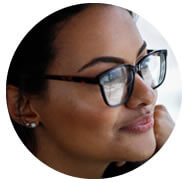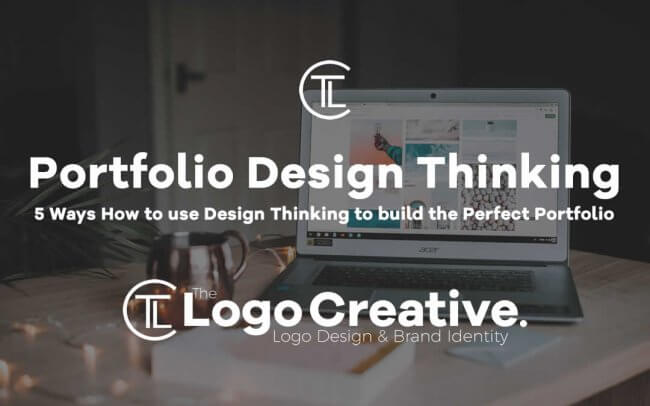Nowadays, contrary to the usage of resumes by most HR officers, recruiters in the UX careers are looking for candidates with only impressive portfolios. The portfolio farther extends the regular contents of a CV which accounts for skills, work experience and the various attitude of the candidates.
It originally has to do with a combo of visuals, facts, and texts that describe the manner in which you handled projects in times past. The objective of a perfect portfolio is basically to show the way you reflect and work as a UX designer. If you appear to be one of those who are fearful about creating a splendid portfolio, then this article would greatly conquer your fears. Relax!

There are simple and exciting ways you can build a perfect portfolio. These ways are what makes you empathize, define, ideate, prototype and evaluate your works. For ease of remembrance, we suggest that you smartly make use of an acronym (EDIPE).
-
Table of Contents
Empathize with the audience of your portfolio
Have it in mind that the key audience of your portfolio would continue to be UX hirers and designers who are likely to collaborate with you. Because they are extremely busy with several, on-hands projects, they hire prospects only when they need them. In fact, when they hire, trying to review the portfolios is another task they do alongside their loads of work.
Therefore, they often require finding someone and getting one promptly, they invite only the constantly prospective jobbers for the interview. The UX designers who go through the portfolios of the applicants go about this alongside their active duties. In corporations which absorb a greater number of applications, this is habitually a time-taking duty. So, you should not anticipate that they would go through your portfolio for more than some minutes.
People always try to know what the stuff of a prospective candidate is. Hirers themselves love to see in hires a level of semblance. By that alone, your portfolio needs to be a reflection to them. They really want to understand how you work, the manner you corporate, the way you deal with herculean tasks and the manner in which you are reflective of your own work experience.
-
Define the Problem: What are the needs of the audience which your portfolio must meet?
By knowing who our audiences are, we can then begin to take care of their needs. As a result of the little time available to reviewers, portfolio summaries are so succinct – usually only a minute or two of getting through your content. Because of this, there is no good in stocking your portfolio with volumes – no one would really give any large stuff much attention. Put it in mind always that your portfolio has no objective than to fetch you interviews.
We have gleaned some few hints that may be helpful:
A drawer
Your portfolio needs to be a drawer. It must fetch your interviews. Hirers need you to convince them through your portfolio that you are more likely a candidate for an interview with them. This is not really about your life history. It does not have to mention all your life details. Your portfolio should be interesting enough so as to cause them to invite you for some job interviews.
Brevity
Your portfolio needs to consist of few details relating to yourself and some case studies which showcase your most perfect jobs and fully represent your capabilities. Attach some sections that hirers can relate to your agenda – the reason you want to be a team member. Make sure the case studies you provide suit the particular role of the job.
Do not show the results but the process
The case studies you provide should depict that you comprehend constraints and that you can meditate on how you proffer solutions with those constraints in mind. Case studies should not be solely graphics – you require texts and images alike. Everything in your portfolio should draw its weight for your work.
Be humble
Try to acknowledge every lapse, people, teams, failures, critique, impediments and the lessons in your portfolio. Doing this stands you in good stead.
-
Ideate for the building blocks of the UX portfolio
There are varieties of portfolios you can examine and derive ideas from in order to present your own case studies. Because it is very easy to differentiate those that are very effective from those that are not. We have provided a way through which you can distinguish those that are good from the not-so-good ones.
Individual details
You should find a way to fit into one page, all the basic facts concerning yourself. You should specify your level of education, past working experience, recommendations, and skills all into only a page.
Problem Statements
You need to find specific statements that deal with the works or projects you have handled in the past. As succinct as you can be, try to contextualize your lines of thought about your projects. State and describe problems you encountered in the course of doing them. These are things like individual challenges, time constraint, the dearth of resources, etc.
Lines of thoughts
These are your thought processes. Oftentimes, wonderful portfolios account for rough sketches and examples. It is not often particular about the end products. Look out for instances that depict to you, the way you can exemplify and annotate project artifacts maximally.
Perspectives
This talks about the viewpoints which you should express, not in your own personal term, but that of a user.
Critical reflections
This also deals with the general lessons you can get from the activity put together. In works of art generally, Proessaywriting experts often suggest that artists like painters, designers and writers should reflectively do a critique of their works. The same applies to your portfolios too.
Choices
This talks about alternatives which you discovered in the course of carrying out the work and eventually discarded. Look out for examples that explain how you met several alternatives and elucidate the reason for choosing one.
Options for development
Here, you only need to look out for examples that relate the interactions of the designer alongside the development team.
Results
What are the outcomes of your diligence? These generally have to do with evaluation results and analytics, depicting you did one or two things the proper way. Most professional writers design many of the custom essay papers you see around this way. Find examples that can help you with proper presentations of results.
-
Get a Prototype for your portfolio
The end result of your project work is what you would build your resourceful workaround, on the condition that you are to expand it. The inverse should also work effectively for you – an impressive UX project should also be suitable for a useful case study. Find an excellent case study and sift a case study from it. Continue to practice editing it over time and you would come to a perfect position eventually.
-
Evaluate
This is about doing some quality control over your project. Just as an essay writer would actually make efforts at revisiting his work to ensure they are done effectively, editing and summary evaluations are typical of every work of art. This does not leave your portfolio case studies out. You should be able to ensure they suit the purposes for which you have designed them. Put them under critical radar and you would be able to get a workable result.
How design can make your portfolio better
Design can make your portfolio effective especially when you tap the best of technology to showcase the design. But how things are done over time has changed. Before the advent of internet connection, if you use physical paper portfolios as a designer, you are poised to get interviews by the hirers if your portfolio is good. Nowadays, you need to adapt to changes that the internet has orchestrated.
You need to generate and present your ideas digitally. Use an ad, develop an app, show your experience, and shoot a video that brings a solution to a problem. Be a few clicks away – get your portfolio on a website.
Why are they good and effective?
We think you understand now that design thinking is good and effective because it offers a good medium for you to develop your UX portfolio with the hirers in mind. As a designer, you can always make use of the human-based style that the design thinking takes for development and ideation.
Design thinking is important for dealing with issues and challenges which are unknown or not properly defined. However, you need to appreciate that everyone must always improve his skills, logical thinking and study knowledge to do exploits in building a viable portfolio that secures interviews.
Conclusion
Building an impressive portfolio is the most essential need for getting a job as a designer. Now, understanding the viewpoints of your prospective employers would increase the chances of getting employment. A well-articulated portfolio is a great bait; just focus on quality and important details. During the interview, you would be able to make the HR know more about you. But know that when you present your portfolio in a professional way, hirers would appreciate that your design thinking is valuable.
Where to Start?
Now you understand more about these 5 Ways How to use Design Thinking to build the Perfect Portfolio you can implement them into your current design portfolio. If you’re just starting out and need help creating a portfolio the RookieUp is a great place to start with their Design Portfolio Starter Kit and it’s perfect when you’re ready to start your design career.
Learn how to create your own personal branding and create the perfect portfolio that showcases your design projects beautifully to potential clients or employers.
That’s just the start as not only will you learn the fundamentals of creating that wonderful portfolio it will also teach you how to come up with ideas for projects based on your interests and then build them using the design processes used by professional designers. It will also teach you how to think like a professional designer and turn those ideas into well-researched projects for your portfolio that not only look great but showcase your skills and problem-solving abilities. You’ll also learn how to speak about yourself and the work you do so you can fly through those interviews and project meetings with confidence.
It does not end there as you can then move on to the Career Bootcamp: Build Your Portfolio as you will work with a mentor in a 4-week program at building a laser-focused portfolio website full of comprehensive design projects that will help you land design jobs and clients. Its a highly recommended program from our friends over at RookieUp let them know we recommended them and they will look after you!
 Author Bio
Author Bio
Becky Holton is a journalist and a blogger. She is interested in educational technologies and is always ready to support informative speaking.


